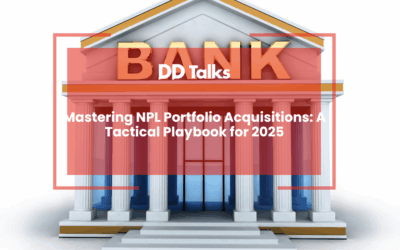The Association for Financial Markets in Europe (AFME) has responded to the European Commission’s consultation on enhancing the EU Securitisation Framework, highlighting the need for proportionate regulation to revitalise the securitisation market. AFME emphasizes the potential of securitisation to support economic growth, the Capital Markets Union, and the Savings and Investment Union by addressing structural barriers and recalibrating regulatory measures.
The Association for Financial Markets in Europe (AFME) has submitted its response to the European Commission’s targeted consultation on the functionality of the EU Securitisation Framework. This engagement underscores AFME’s commitment to advancing discussions that could unlock the potential of securitisation in driving economic growth across the EU.
AFME’s Response to the Consultation
AFME commends the European Commission for undertaking a thorough review of the securitisation market and its regulatory environment. Such efforts are vital to addressing the structural barriers that have hindered the market’s development and, consequently, its capacity to contribute to the EU’s broader economic and financial objectives.
The Potential of Securitisation
Securitisation, in its various forms, is a powerful mechanism for channeling investment into the real economy. Traditional and synthetic securitisations of mortgages, SME loans, corporate debt, and other asset classes hold immense potential to support the Savings and Investment Union and advance the objectives of the Capital Markets Union (CMU). The growing market for significant risk transfer (SRT) transactions is particularly noteworthy, offering new avenues for risk-sharing and financing. Additionally, private securitisations—both asset-backed commercial paper (ABCP) and non-ABCP—can serve as critical funding channels for businesses across the EU.
Regulatory Challenges
To fully harness these benefits, AFME highlights the need for a securitisation framework that is more proportionate and sensitive to risk. Overly stringent regulatory measures, including those within the EU Securitisation Regulation and the EU Prudential Frameworks for banks and insurers, have dampened investor participation and restricted the utility of securitisation as a funding and risk transfer instrument.
Quotes from AFME Leadership
Adam Farkas, CEO of AFME, stated:
“We appreciate the opportunity to provide feedback on the EU Securitisation Framework and its impact on the market. A revitalised securitisation market is critical to achieving the EU’s competitiveness and economic growth goals. We applaud the European Commission’s commitment to ensuring the framework evolves to meet these ambitions.”
Shaun Baddeley, AFME’s Head of Securitisation, added:
“Securitisation is a proven tool for expanding credit and transferring risk effectively. The subdued state of Europe’s securitisation market over the past decade can largely be attributed to regulatory overreach. It is essential to recalibrate the framework to re-energise this vital market and unlock its full potential.”
Ongoing Engagement and Next Steps
Building on its earlier publication, ‘EU Securitisation: Back on Track’, AFME remains actively engaged with EU policymakers and industry stakeholders. The association looks forward to continued collaboration to ensure the securitisation framework supports sustainable growth and robust capital markets across Europe.
FAQs
- What is the purpose of AFME’s response to the EU consultation?
- AFME aims to provide insights and recommendations to enhance the EU Securitisation Framework, addressing structural barriers and regulatory challenges to unlock the potential of securitisation.
- Why is securitisation important for the EU economy?
- Securitisation is a critical mechanism for channeling investments into the real economy, supporting the Savings and Investment Union and the Capital Markets Union, and advancing economic growth.
- What are the regulatory challenges highlighted by AFME?
- AFME notes that overly stringent regulatory measures within the EU Securitisation Regulation and Prudential Frameworks have dampened investor participation and limited the market’s potential.
- What is AFME’s outlook for the future of the EU securitisation market?
- AFME advocates for recalibrating the regulatory framework to re-energise the securitisation market, ensuring it contributes to economic growth and robust capital markets across the EU.



0 Comments